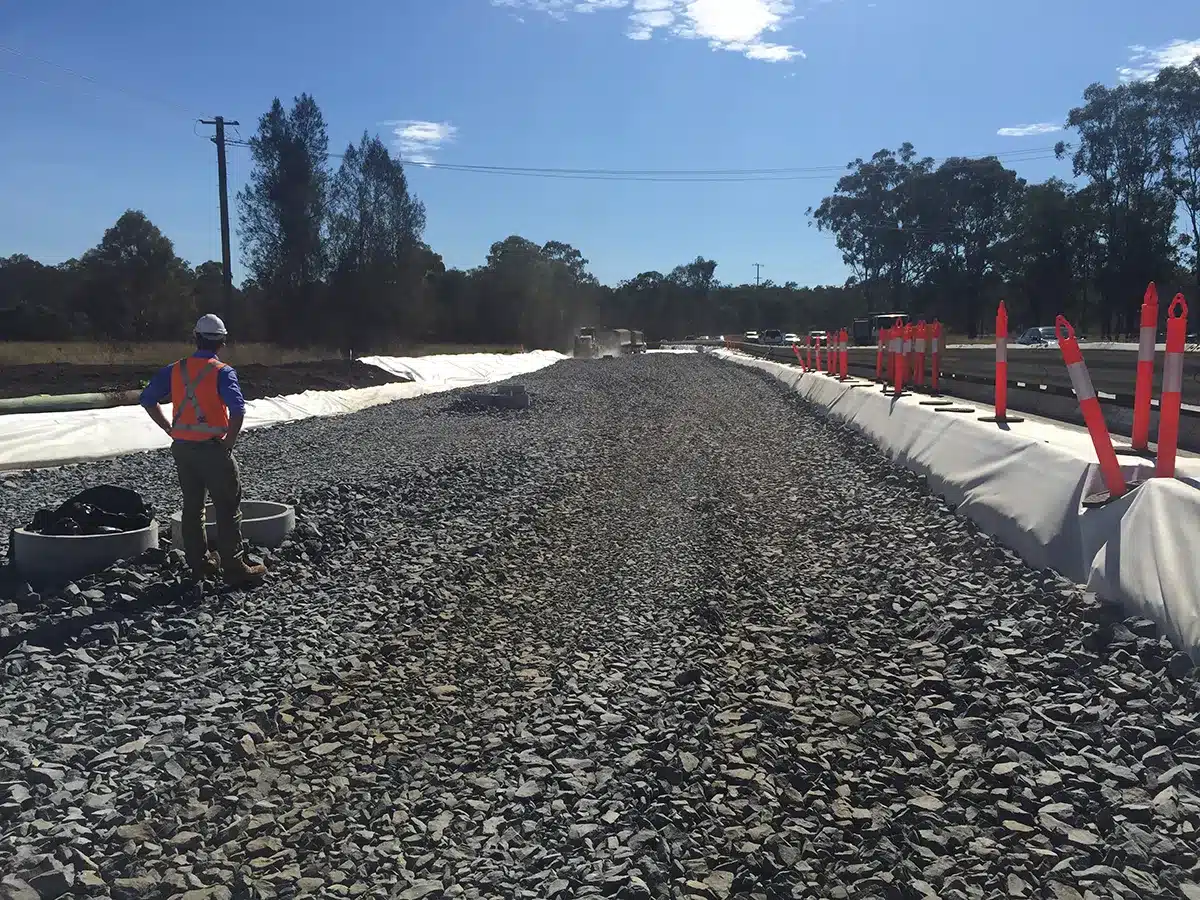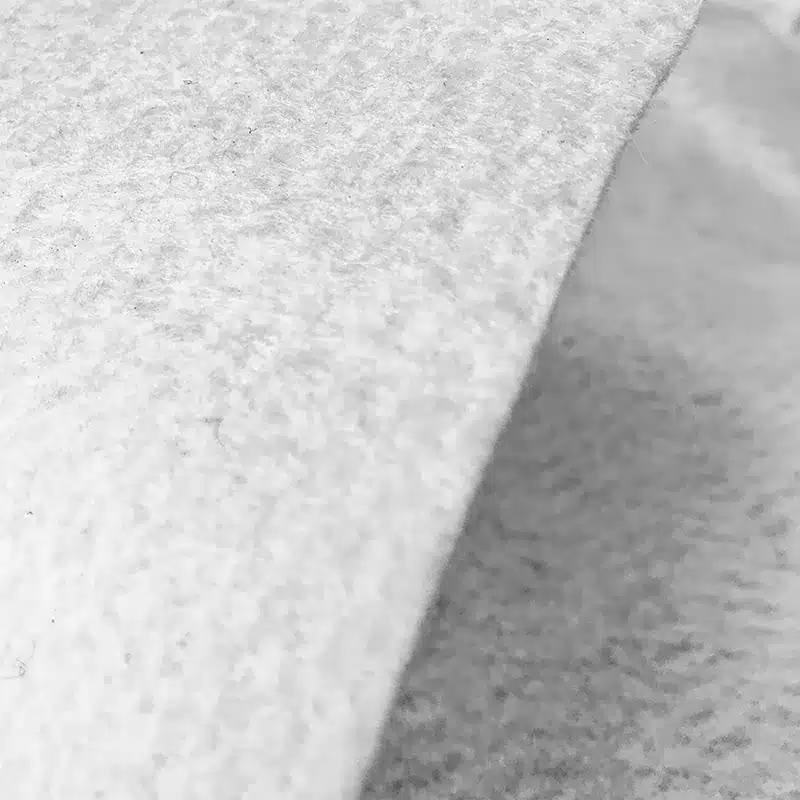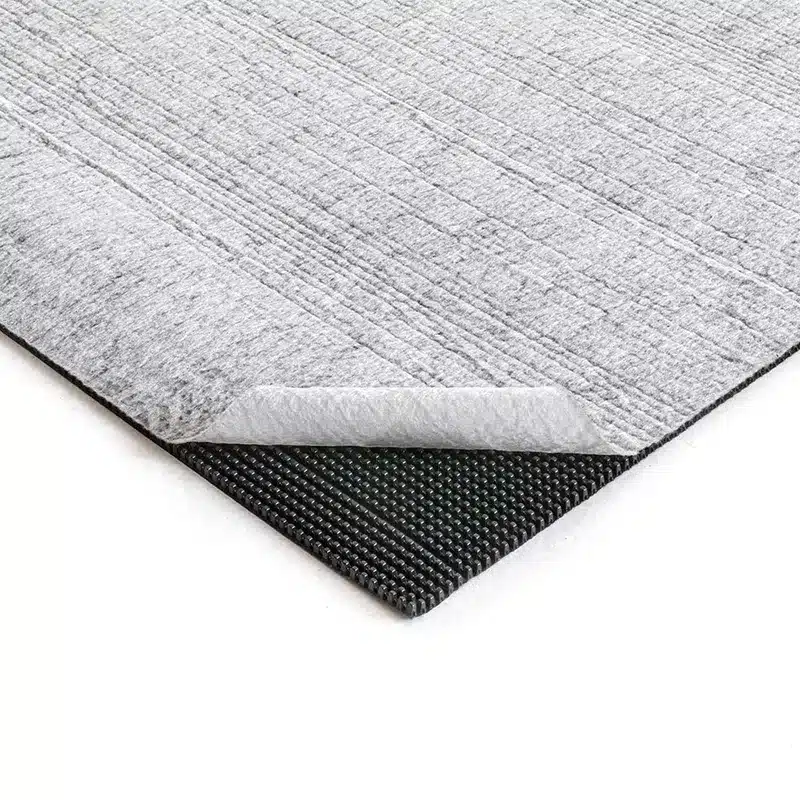+86-159 9860 6917
info@geofantex.com
geofantex@gmail.com
+86-400-8266163-44899
Erosion is often viewed as a destructive force, wearing away landscapes and causing environmental damage. However, with the right tools and techniques, erosion can be harnessed for positive outcomes. Geotextiles, a versatile material used in civil engineering and environmental projects, offer a solution to mitigate erosion while providing a range of benefits to various applications. These innovative fabrics reinforce soil and prevent erosion caused by heavy rainfall, wind, and water flow, serving as a protective barrier against the detrimental effects of natural elements.
How do geotextiles prevent erosion?
Geotextiles prevent erosion by acting as a protective barrier that stabilizes soil and controls the movement of water. Here’s how they work in preventing erosion:
- Soil Stabilization: Geotextiles are placed between soil layers to improve soil stability. They provide reinforcement, preventing the soil from shifting or eroding due to water or wind. This is particularly useful in slopes, embankments, and other areas where soil erosion is a concern.
- Separation: Geotextiles are often used to separate different layers of soil or aggregates, such as in road construction. This separation prevents the mixing of different soil layers, which can lead to weakened structures and increased erosion.
- Filtration: Geotextiles allow water to pass through while retaining soil particles. This filtering action prevents soil from being washed away by surface water or runoff, thereby reducing erosion, especially in drainage systems, retaining walls, and riverbanks.
- Drainage: By facilitating the proper drainage of water, geotextiles prevent water from accumulating in the soil, which can lead to erosion. They ensure that water moves through the soil in a controlled manner, reducing the erosive force of water flow.
- Protection: Geotextiles can also be used to protect soil surfaces from the direct impact of rainfall or surface water flow. This is achieved by placing them on the surface of the soil, where they absorb and dissipate the energy of falling water, reducing its erosive impact.
In summary, geotextiles are an effective tool in erosion control by stabilizing soil, filtering water, improving drainage, and protecting soil surfaces from erosive forces.

What is geotextile fabric for erosion?
Geotextile fabric plays a crucial role in erosion control by providing a stable and durable barrier that prevents soil erosion. These fabrics, made from synthetic materials like polyester or polypropylene, are used in various applications to protect soil from the destructive forces of water and wind. Their ability to reinforce and stabilize the ground makes them a key component in construction, landscaping, and environmental conservation projects.
What is the purpose of geotextile fabric in erosion control?
Geotextile fabric is designed to stabilize soil and prevent erosion by acting as a barrier that allows water to pass through while holding soil particles in place. This fabric is often used on slopes, along riverbanks, and in other areas prone to erosion to maintain soil integrity and support vegetation growth.
How does geotextile fabric prevent erosion?
Geotextile fabric prevents erosion by reinforcing the soil and distributing the forces of water and wind over a larger area. It helps to maintain soil structure by allowing water to filter through while trapping soil particles. This reduces the speed of water runoff, minimizing the potential for soil displacement.
What are the types of geotextile fabrics used for erosion control?
Geotextile fabric prevents erosion by reinforcing the soil and distributing the forces of water and wind over a larger area. It helps to maintain soil structure by allowing water to filter through while trapping soil particles. This reduces the speed of water runoff, minimizing the potential for soil displacement.
Where is geotextile fabric commonly used for erosion control?
Geotextile fabric is commonly used in a variety of erosion control applications, including riverbanks, coastal areas, steep slopes, and drainage systems. It is also used in retaining walls and as a protective layer under riprap or other erosion control materials to enhance their effectiveness and longevity.
Geotextile fabric is an essential tool in erosion control, providing a robust solution to protect soil from the damaging effects of water and wind. By stabilizing the soil, preventing displacement, and allowing for proper drainage, these fabrics help maintain the integrity of landscapes and construction projects, ensuring long-term stability and environmental protection.
What are the benefits of geotextiles?
The use of geotextiles presents numerous advantages beyond erosion control. Firstly, these materials offer cost-effective solutions for soil stabilization, erosion control, drainage improvement, separation, filtration, protection, and reinforcement, reducing the need for frequent maintenance and ensuring long-term effectiveness. Additionally, geotextiles contribute to environmental sustainability by minimizing soil loss and sedimentation in water bodies, thus promoting eco-friendly practices. Moreover, their versatility extends to diverse applications such as road construction, landscaping, and agricultural engineering, making them invaluable in various industries.
How will geotextiles improve the site?
Integrating geotextiles into project sites can lead to significant improvements in stability, functionality, and longevity. By providing a stable base for soil and preventing it from being washed away by water, these materials preserve soil integrity, safeguarding infrastructure and landscapes from damage. Moreover, geotextiles enhance site aesthetics by providing erosion control solutions that blend seamlessly with the natural environment. With reduced maintenance requirements and enhanced durability, sites fortified with geotextiles experience prolonged service life and increased resilience to environmental challenges.
Geotextiles offer a multifaceted approach to erosion control, harnessing the power of erosion for beneficial outcomes. By preventing soil loss, promoting stability, and enhancing site performance, these versatile materials play a crucial role in sustainable development and environmental conservation. Embracing geotextiles as a solution not only addresses erosion challenges but also unlocks a myriad of benefits across various industries and applications.



Get Free Sample
We’ll respond as soon as possible(within 12 hours)






















